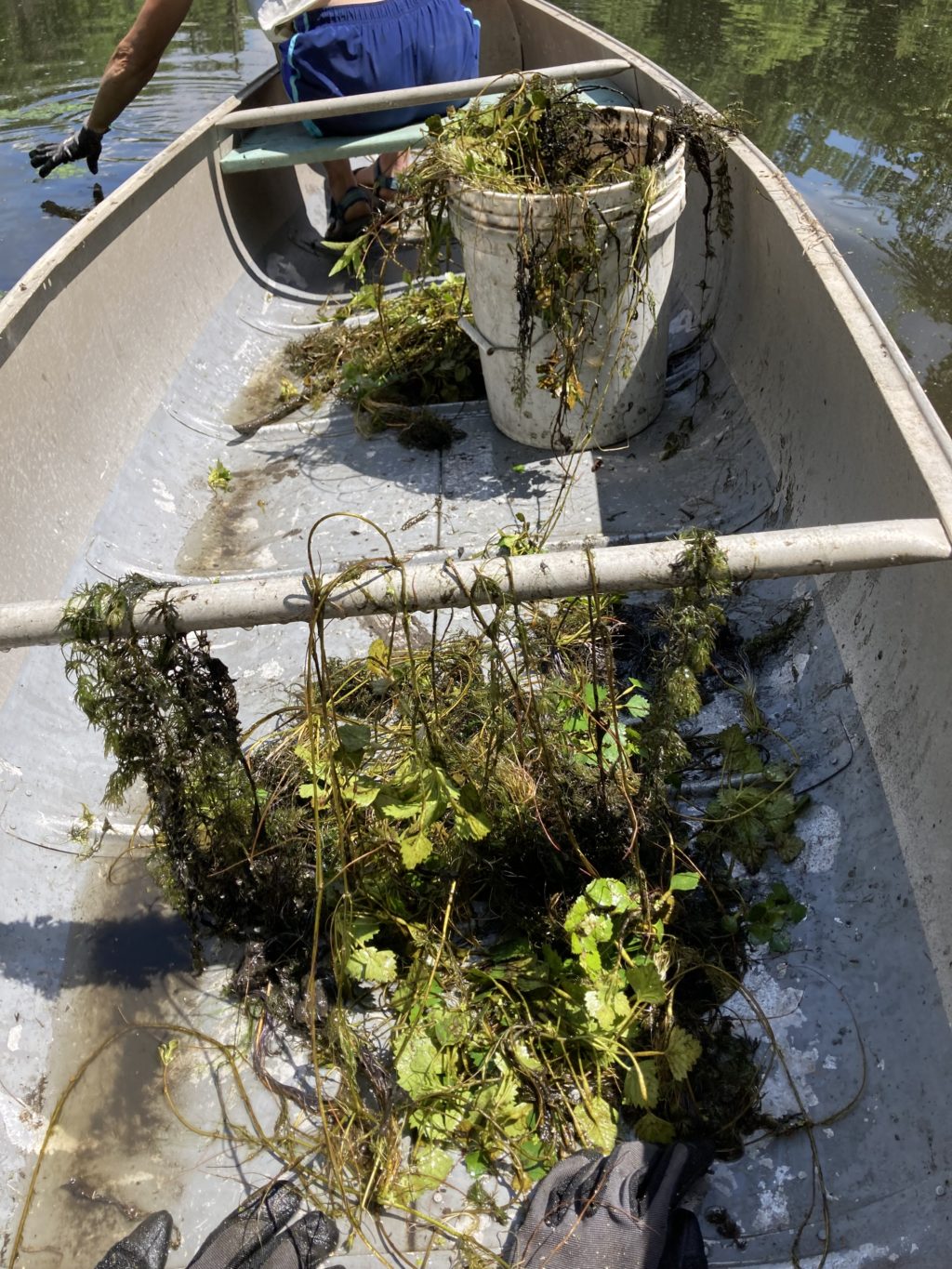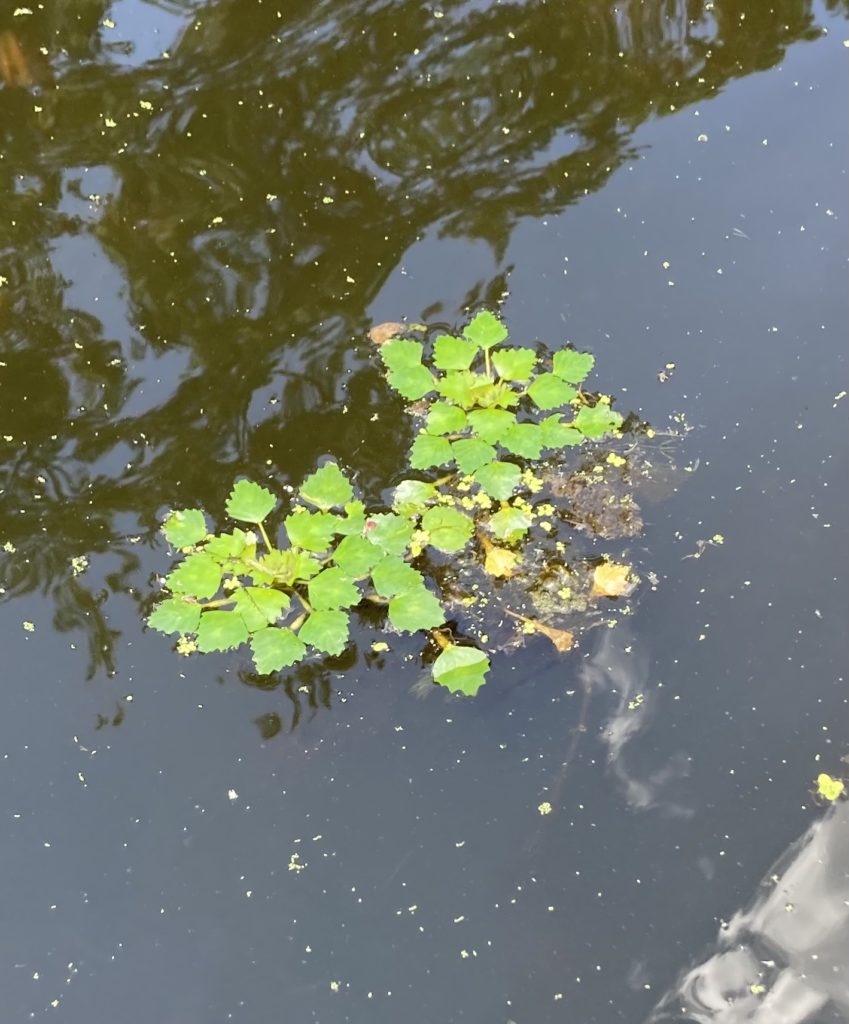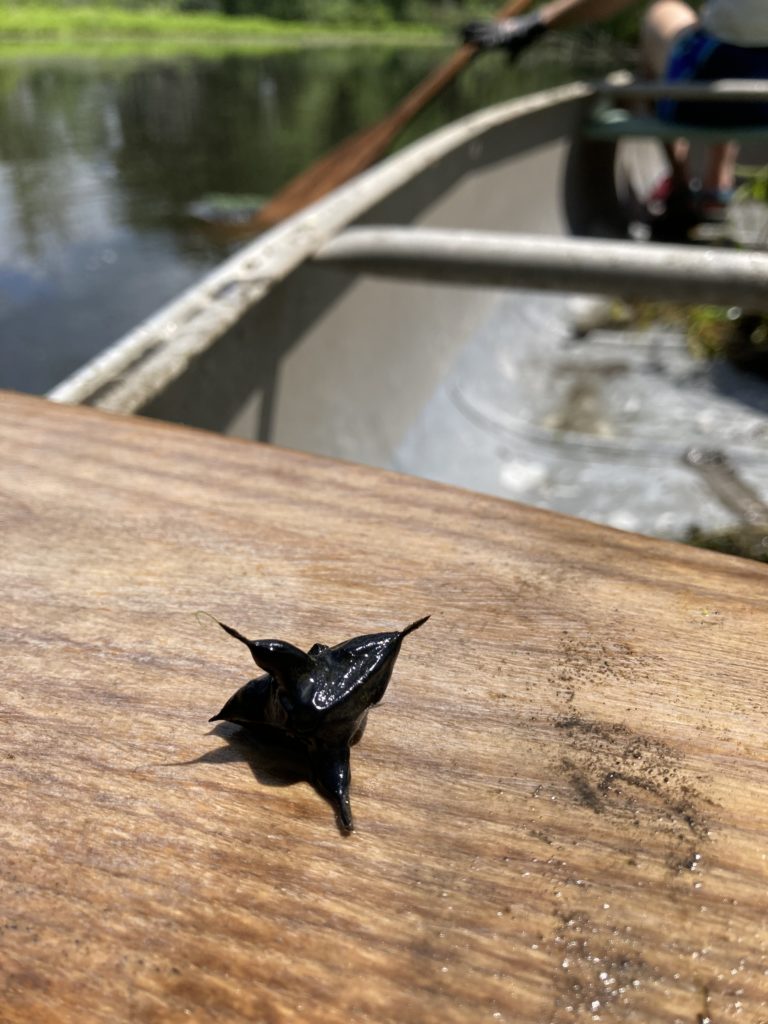Almanac: Fun With Water Chestnuts

Hunting for water chestnuts on Lake Warner. Photo: Stephen Braun
Here’s how to pull a water chestnut. First, find one. This is best done from a boat while plying a small pond or lake since water chestnuts grow like lily pads, with an upper array of floating leaves attached by a long stem to roots embedded in muck. Unlike water lilies, the upper part of water chestnuts consists of rosettes of small, bright green, tooth-edged leaves rather than single, plate-like leaves. This makes water chestnuts unmistakable once you learn them.

When you find a rosette, reach down and grab it—but grab very gently. Don’t yank! The goal of a good chestnut pull is to extract the entire plant, roots, seed pods, and rosette. You have to pull very gently, letting the roots slowly release from the muck. This takes a bit of practice and some snapped stems, which leave you with a rosette in your hand, but not the all-important seed pods and roots.
With good technique you’ll pull up anywhere from 3 to 12 feet of stem before the weedy, muck-covered ball of roots appears, along with some walnut-sized, evil-looking black seed pods armed with four very sharp spikes. These nasty little pieces of work are why another common name for the plant is “devil pod.” (The “proper” common name is water caltrop, and this plant has nothing to do with the plant from which canned water chestnuts come from.)

When your dripping, smelly water chestnut root ball emerges from the depths, you swing the entire mess into your boat, or, if you want to keep things somewhat tidy, into a large plastic tub inside your boat. Then you look around for another victim, which is usually not far away.
So that’s how you pull a water chestnut. By now, of course, the question more likely arising in your mind is why on god’s green earth would you want to pull a water chestnut?
Well, if you’re a certain type of person—and my friend and I belong in this…ah…unique class of people—you actually find this activity fun. Or, at least, satisfying. That’s because water chestnuts are a highly invasive species, having been introduced from Europe in the late 19th century by some workers at the Harvard Botanic garden, who ought to have known better but didn’t. Without their natural predators, which, in Europe, includes humans, who eat the seeds inside the pods, water chestnuts have spread all over the Northeast, choking out fragrant water lilies, bull lilies, and other native aquatic plants and forming very dense carpets of vegetation that impede boats and make swimming impossible (and also potentially painful because of the aforementioned devil pods).
My friend and I were participating in one of the regular water chestnut pulls on Lake Warner in North Hadley, organized by the Friends of Lake Warner. Over the years volunteers have pulled literally tons of water chestnut plants out of the shallow lake. The lake is already challenged by algae blooms fed by runoff from nearby fields and farms. But by removing water chestnuts, the volunteers prevent wholesale ecocide and the lake remains passable by canoes and kayaks all summer.
We filled our bucket and then, in our fervor, used the canoe itself as a bucket as we probed the shallow areas at the far eastern end of the lake. It was a calm, sunny, and blessedly bug-free day. Since we were moving very slowly—or not at all—we got some close-up views of a great blue heron and many of the other birds common on the lake. Eventually we tired of the hunt and returned, although with diversions when we spotted yet more chestnuts. We took our sopping haul to my friend’s backyard, where it will safely decompose. Since water chestnut seed pods remain viable at the bottom of the lake for up to a decade, and because it’s impossible to find every single rosette, the chestnut pulls are needed every year…but we decided we’d have at it again in a few weeks because it was just such good fun.
Almanac is a regular Indy column of observations, musings, and occasional harangues related to the woods, waters, mountains, and skies of the Pioneer Valley. Please feel free to comment on posts and add your own experiences or observations.

“[T]heir natural predators, … includ[ing] humans, … eat the seeds inside the pods….”
So, Steve … how did they taste? 😉
Rob Kusner